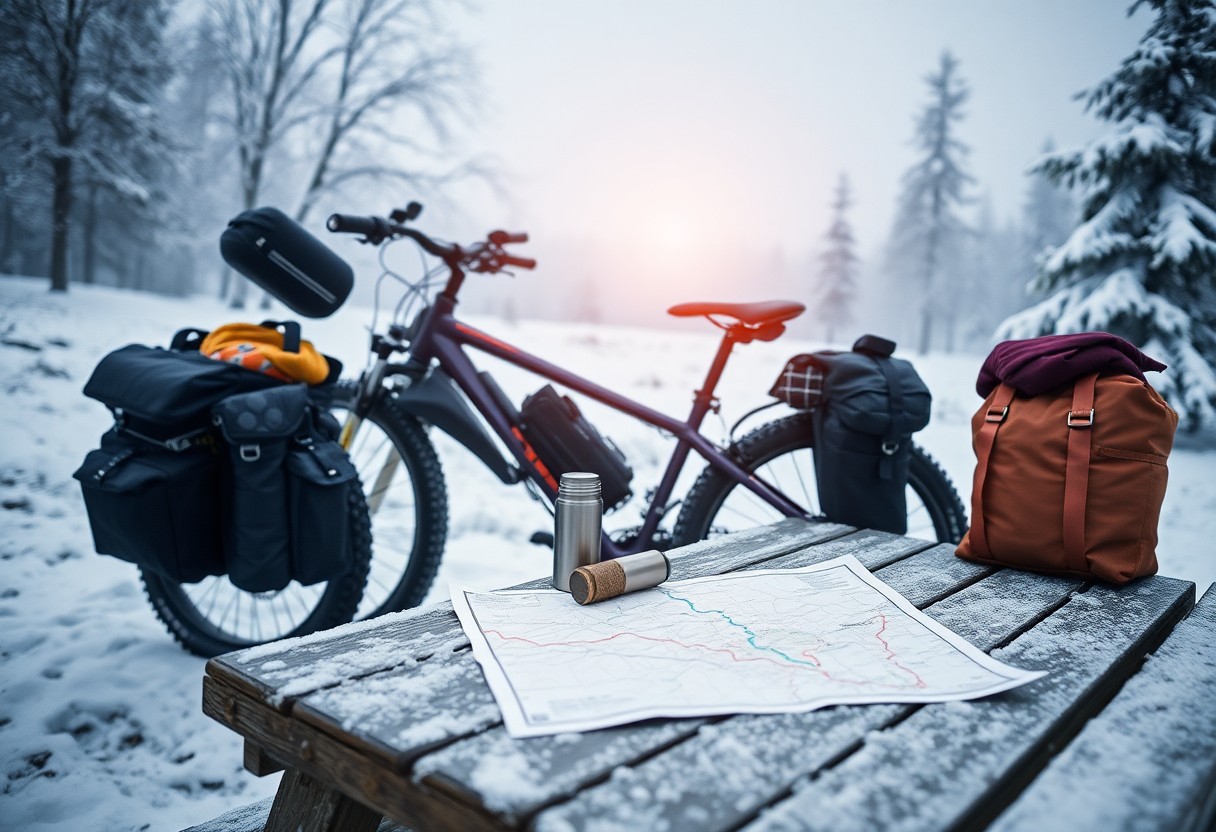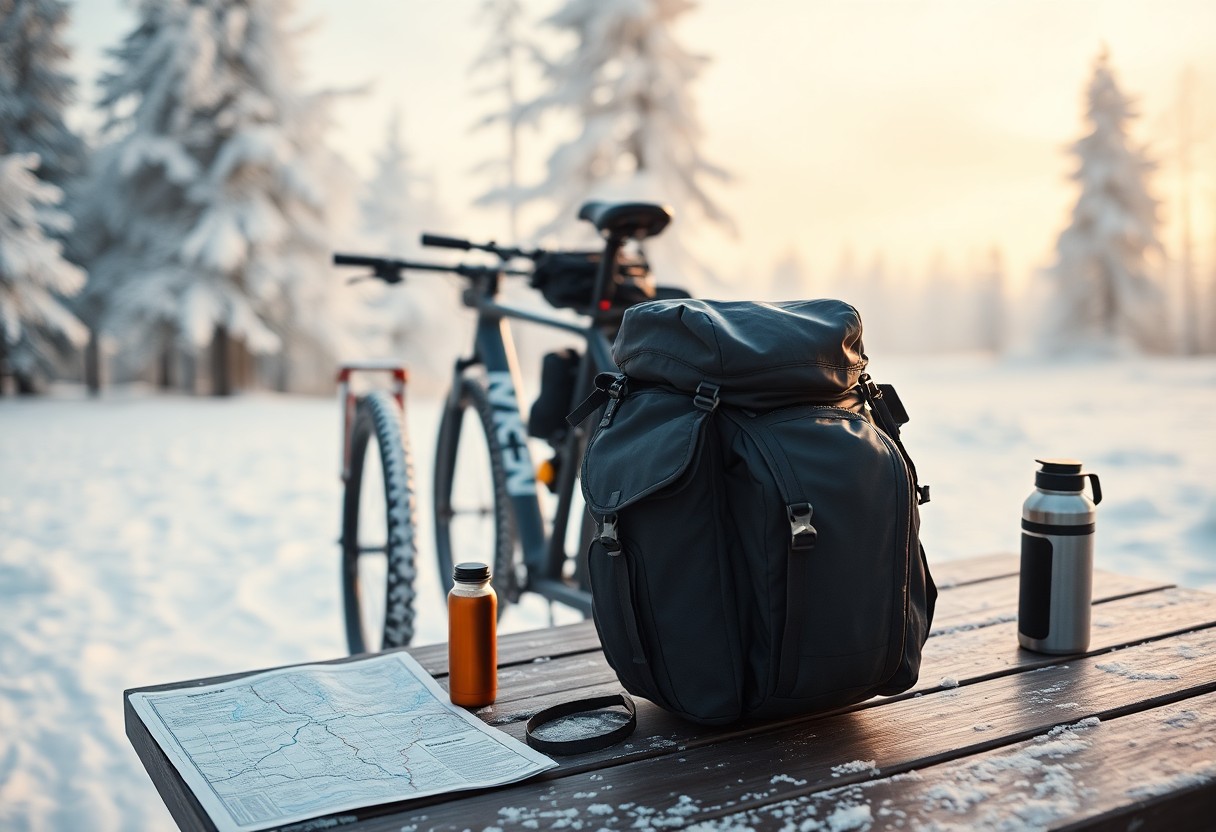Just because the temperature drops doesn’t mean your bikepacking adventures have to come to a halt. With the right preparation and gear, you can safely enjoy the serenity of the winter landscape. This guide provides you with vital tips to keep you warm, comfortable, and safe during your cold weather excursions. From layering your clothing effectively to choosing the right bike accessories, these strategies will help you tackle the chill and make your outdoor experience enjoyable and rewarding.
Mastering Layering: Your Key to Staying Warm
Layering effectively is the cornerstone of staying warm during your cold weather bikepacking adventures. A well-structured layering system traps heat while allowing moisture to escape, ensuring you remain comfortable as you navigate varying temperatures and exertion levels. By adopting a three-layer approach—base, insulation, and shell—you can optimise your comfort and manage your body temperature efficiently, keeping unnecessary chills at bay throughout your journey.
Choosing the Right Base Layers
Your choice of base layers sets the foundation for warmth and moisture management. Opt for technical fabrics such as merino wool or synthetic blends that wick sweat away from your skin while insulating effectively. These materials dry quickly, helping to maintain a stable body temperature. Aim for a snug fit, as loose fabric can lead to inefficiency in heat retention, making a significant difference during those chilly rides.
The Importance of Insulation and Shell Layers
Insulation and shell layers act as your protective barriers against the cold and harsh elements. Insulation—such as fleece or down—provides warmth by trapping body heat and preventing it from escaping. A shell layer, typically made of waterproof or windproof materials, defends against biting winds and rain, ensuring you stay dry and comfortable. Together, these layers create a versatile system, adapting to changing weather conditions on your bikepacking trip.
When choosing insulation, consider options like synthetic insulation, which retains warmth even when damp, or down insulation, which offers superb warmth-to-weight ratios. A good shell layer should feature features such as adjustable cuffs and hoods, ensuring a snug fit that seals out cold air. The versatility of this layering approach lets you easily add or remove layers during your ride, helping you stay comfortable regardless of fluctuating temperatures or conditions.
Gear That Makes a Difference: Essential Equipment for Cold Weather
The right gear can enhance your cold weather bikepacking experience, ensuring comfort and safety. Investing in high-quality equipment designed for low temperatures is non-negotiable. Key items include an insulated sleeping bag rated for sub-zero conditions, a reliable tent with excellent wind resistance, and lightweight, durable cook gear. Multifunctional tools and a good repair kit should always accompany you, while a hydration system that prevents freezing is crucial. Well-chosen equipment not only keeps you warm but also contributes to an enjoyable adventure.
Selecting the Perfect Bike
Your bike should be rugged enough to handle varied terrains and equipped for winter conditions. Consider a model with wider tyres for better grip on snow and ice, and ensure it has mounts for fenders and racks to carry your gear. A bike with a strong frame will give you confidence as you tackle challenging trails, while disc brakes offer superior stopping power in wet and slippery conditions.
Navigating Clothing and Footwear Choices
Your clothing and footwear are vital components in maintaining warmth. A proper balance of insulation, breathability, and weather resistance is necessary for optimal comfort. Layering with moisture-wicking materials close to your skin, insulating layers in the middle, and a waterproof, windproof exterior creates an effective barrier against the elements. Footwear should be insulated and waterproof, as cold feet can quickly ruin your adventure. Choose socks made of merino wool or synthetic blends to manage moisture and maintain warmth even in the wettest conditions.
Selecting the right clothing and footwear is about personal comfort and performance. Base layers should wick away sweat to prevent chilling, so opt for fabrics that keep you dry. Your outer layer must shield you from wind and rain without sacrificing breathability to avoid overheating. Insulated, waterproof gloves are also a game changer for preserving dexterity without freezing your fingers. Your footwear must provide support and traction while accommodating thicker socks for warmth. Balancing these elements ensures that you stay comfortable, even on the chilliest night rides.
Riding Techniques for Challenging Conditions
Adapting your riding techniques is important when faced with cold and slippery conditions. Focus on maintaining a steady pace; abrupt movements can lead to loss of traction. Shift your weight back when navigating downhill, which helps increase grip on the rear wheel. Additionally, reduce your speed when cornering, and keep your lines smooth to ensure stability. Your ability to read the terrain and anticipate slippery sections can drastically improve your handling and safety while bikepacking in adverse weather.
Adjusting Riding Style for Cold and Slippery Surfaces
When tackling cold and slippery surfaces, a more relaxed riding style helps minimise the risk of accidents. Lean your body slightly forward to maintain balance and traction on the front wheel, while keeping elbows bent for better control. Utilise lower gears to manage torque with greater precision, and be mindful of how different materials, such as ice or wet gravel, can impact your grip. Smooth, gradual movements enhance stability, so avoid quick or harsh turns that can cause you to skid.
Managing Battery Life in Extreme Temperatures
Extreme temperatures can significantly affect your battery life, leading to unexpected shutdowns. Keep your battery warm by insulating it or storing it close to your body when you’re not riding. Lithium-ion batteries can lose up to 40% of their capacity in freezing conditions, so charge your battery fully before begining on a ride. When possible, limit your use of power-heavy devices like lights and GPS to extend battery life and keep your communication devices operational.
| Charge Your Battery Fully | Ensure your battery is at full capacity before starting your journey. |
| Insulate the Battery | Keep your battery warm by insulating it or carrying it close to your body. |
| Limit Power-Heavy Devices | Use lights and GPS conservatively to prolong battery life. |
| Keep Spare Batteries Handy | Consider packing additional batteries in case of emergencies. |
When managing battery life in extreme temperatures, pay attention to your device’s performance. Cold weather can hinder not just the battery’s capacity but also its efficiency, making it important to be proactive. Carrying spare batteries may seem cumbersome, but it can save you from being stranded without necessary navigation tools or lights. Also, consider using low-energy modes on your devices, as these settings can extend battery life without sacrificing too much functionality.
Nutrition and Hydration: Fueling Your Adventure
Your body’s performance relies heavily on the fuel you provide, especially in cold weather when energy demands increase. Opt for a balanced mix of carbohydrates, proteins, and fats to sustain your energy levels during long rides. Pack energy-dense snacks such as nuts, dried fruits, and nut butters, which can easily fit into your pockets and provide quick energy boosts. Additionally, focus on consuming warm meals when you can, as they not only comfort you but also help maintain your core temperature.
Foods That Keep You Energised
Choosing the right foods plays an integral role in maintaining your energy while bikepacking in colder climates. Dried fruits, granola bars, and energy gels are excellent choices for quick snacks. Additionally, consider packing high-calorie, nutrient-rich options like whole-grain pasta, quinoa, and fatty fish, which offer lasting energy throughout your journey. Incorporating a variety of snacks ensures you won’t get bored and keeps your morale high.
Staying Hydrated in Freezing Conditions
Dehydration may be the last thing on your mind when it’s cold, but your body still loses fluids through sweat and respiration. Carrying an insulated water bottle or hydration system will prevent your drinking water from freezing. Aim to consume warm drinks, such as herbal tea or warm water, which can keep you both hydrated and warmed up. Additionally, consume foods with high water content, like fruits and soups, to further aid in hydration.
When cycling in sub-zero temperatures, a proactive approach to hydration is key. Cold air can dry out your throat and lungs, leading to increased fluid loss. Aim to take small sips regularly rather than large amounts infrequently. An insulated water bottle will not only keep your drink from freezing but also serve as a heat reservoir. Including a small thermos with hot beverages in your kit ensures you can successfully maintain hydration levels and stave off the chill during breaks.

Planning and Preparing for Cold Weather Trips
Successful cold weather bikepacking starts with meticulous planning and preparation. Assessing your fitness level, selecting appropriate gear, and creating a flexible itinerary are key steps. Make use of resources like local weather forecasts, historical data, and trail conditions, and always anticipate the unexpected. Crafting a well-thought-out plan allows you to enjoy the journey while managing the unique challenges cold weather brings.
Understanding Weather Patterns and Route Selection
Weather can make or break your bikepacking adventure, especially in colder months. Familiarise yourself with local meteorological patterns and seasonal variations specific to your chosen routes. This knowledge will help you choose optimal times to travel, select paths that shield you from harsh elements, and ensure a safer experience overall. For instance, consider routes that offer natural windbreaks or terrain that tends to remain less icy.
Emergency Preparedness: What to Have on Hand
Packing an emergency kit tailored for cold weather is vital for your safety and comfort. Include imperatives like a first aid kit, extra layers of clothing, a reliable multi-tool, food supplies high in calories, and a portable heat source, such as hand warmers. Additionally, always carry a fully charged power bank for your devices and a map or GPS to navigate through unforeseen circumstances.
In the event of an emergency, your preparedness could significantly impact your wellbeing. Consider including a compact bivvy bag for emergency shelter, as well as a lightweight thermal blanket. A robust repair kit should not only cover bike issues but also tools for minor injuries. Keeping a whistle and a mirror can help in signalling for help if you find yourself isolated. Prioritising these items ensures that you’re well-equipped to handle both minor setbacks and major challenges on your cold weather adventure.
Final Words
As a reminder, effective cold weather bikepacking requires preparation and the right gear to ensure a comfortable and enjoyable experience. Ensuring that you layer properly, choosing suitable equipment, and planning for potential weather variations will make all the difference in your journey. Pay attention to your hydration and nutrition, as these aspects can significantly impact your performance in cold conditions. By following these tips, you’ll be well-equipped to tackle the challenges of cold weather and fully embrace the adventure ahead.
